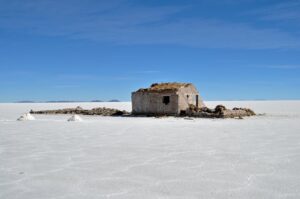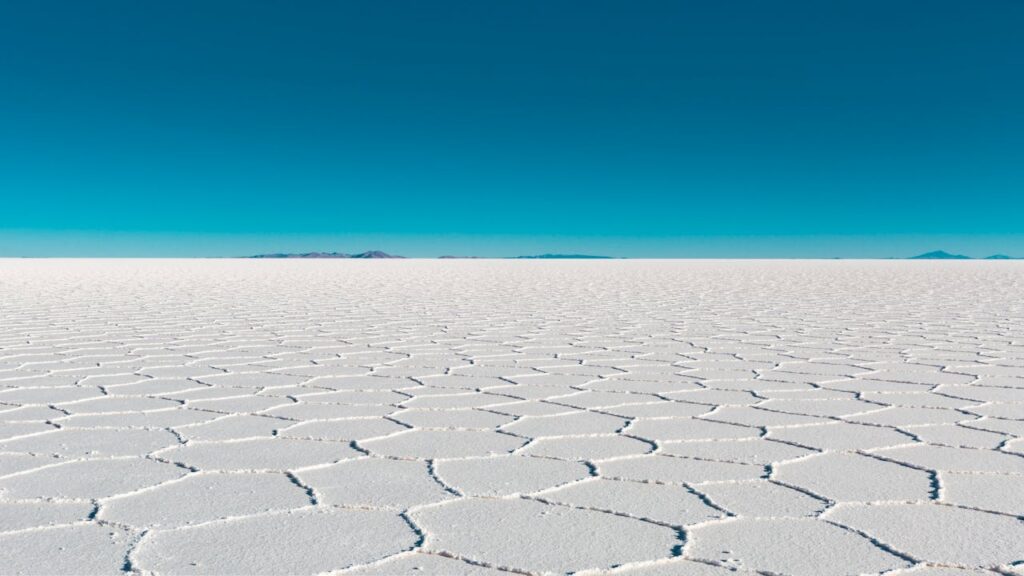Salar de Uyuni Salt Flat in Bolivia
Have you ever heard of Salar de Uyuni? You can find this place in Bolivia and now this place has extremely become a tourist spot that people love to visit Salar de Uyuni salt flat in Bolivia from around the world. If you have not heard about this place you can continue to read below for more information on Salar de Uyuni: world’s largest magical mirror effect Salt flat in Bolivia.
This is the world’s largest salt flat, which stretches over 10,000 square kilometers. It is situated in the southwest of the country, near the crest of the Andes at an altitude of approximately 3,656 meters (11,995 feet) above sea level. When it rains, the salt flat turns into a giant mirror, creating surreal, reflective landscapes that look like an endless sky.
Salar de Uyuni salt flat in Bolivia has become a tourist attractive place that people love to visit this place. If you love beach exploration you can visit Jervis Bay South Coast of New South Wales, Australia: Popular Attractions to make your trip amazing and unforgettable.
Likewise, you can also visit Lake Hillier: Amazing and Beautiful Pink Lake Hillier of Western Australia to have aerial or sea view of Pink Lake Hillier, the lake itself is pink in color as it is called by name.
Basic Structures in Salar de Uyuni Salt Flat in Bolivia
You can find basic structures and effects of this place such as; Origin and formation, mirror effect, patterns and tourism.
1. Origins and Formation. Salar de Uyuni was formed when prehistoric lakes evaporated thousands of years ago, leaving behind a thick crust of salt and a remarkable, otherworldly landscape. Beneath the salt surface, there is a significant amount of lithium-rich brine, making it an important source of this valuable metal, which is used in batteries.
2. Mirror Effect. During the rainy season (usually from December to April), a thin layer of water accumulates on the salt flat, creating an incredible reflective surface that acts like a giant natural mirror. This effect makes it appear as if the sky and the ground are blending seamlessly, offering some of the most stunning and surreal views in the world.
3. Hexagonal Patterns. In the dry season, the salt forms unique hexagonal patterns that stretch out into the horizon, creating a geometric spectacle. These formations occur naturally due to the crystallization of the salt as water evaporates.
4. Isla Incahuasi. Located in the middle of the salt flat, Isla Incahuasi (often called the “island”) is a hilly outcrop covered in giant cacti and fossilized coral. It provides a stark contrast to the vast whiteness of the salt flat and offers panoramic views.
5. Tourism and Experience. Salar de Uyuni is a popular destination for tourists, attracting photographers, adventurers, and nature lovers. Visitors can experience jeep tours across the flat, stay at hotels made entirely of salt, and capture creative perspective-bending photos due to the expansive, featureless landscape.
6. Flora and Fauna. While the salt flat itself is largely devoid of life, the nearby region supports some wildlife, including three species of flamingos that come to breed, particularly during the rainy season. The surrounding areas also host unique plant life adapted to the harsh conditions.
How to visit Salar de Uyuni Salt Flat in Bolivia?

Visiting Salar de Uyuni, Bolivia’s vast salt flat, is a remarkable experience that can be tailored to various preferences and time constraints. Here’s how you can plan your trip
1. Starting Point: Uyuni Town
Most tours to Salar de Uyuni commence from Uyuni, a small town located adjacent to the salt flats. Uyuni serves as the primary hub for travelers seeking to explore the region.
2. Booking Tours
Local Tour Operators: Upon arrival in Uyuni, numerous tour agencies offer a variety of packages. It’s advisable to research and choose reputable operators to ensure safety and quality experiences.
Websites like Viator and Howlanders provide detailed information and booking options for various tours.
3. Accommodations
Experience staying in hotels constructed entirely from salt blocks, offering a unique and authentic ambiance. Hotel Palacio de Sal.
4. Travel Considerations
1. Best Time to Visit. The rainy season (December to April) offers the mirror effect on the salt flats, while the dry season (May to November) showcases the hexagonal salt patterns.
2. Health Precautions. Due to the high altitude, it’s recommended to acclimate and stay hydrated.
3. Packing Essentials. Warm clothing, sunscreen, and a camera for photography are essential.
Activities to Do in Salar de Uyuni
1. Explore the Salt Flat. Sunrise/Sunset Tours. Experience the breathtaking colors of the sky reflecting off the salt flats at sunrise or sunset. Photo Opportunities. Capture creative perspective shots due to the flat, featureless landscape.
2. Visit Isla Incahuasi. Cactus Forest. Walk among giant cacti and enjoy panoramic views from the island’s summit. Photography. The contrasting landscape makes for stunning photography.
3. Train Graveyard. Historical Exploration. Visit this site filled with abandoned trains, providing a glimpse into the region’s mining history.
4. Hot Springs. Relaxation. Soak in natural hot springs in the surrounding areas, especially around the Eduardo Abaroa National Reserve.
5. Colored Lagoons. Wildlife Viewing. Visit lagoons such as Laguna Colorada, which is home to flamingos and features striking red hues due to algae and sediment.
6. Visit the Salt Flats at Night. Stargazing. The lack of light pollution makes it an excellent spot for stargazing, especially on clear nights.
7. Cultural Experiences. Local Villages. Interact with local communities, such as Colchani, to learn about their salt production and traditional ways of life.
8. 4×4 Jeep Tours. Adventure. Embark on guided 4×4 tours to explore the vast salt flat and surrounding regions.
Activities to Avoid in Salar de Uyuni

1. Straying Off Marked Paths. Safety Concerns. Avoid wandering far from your group or established trails, as it can be easy to get lost in the featureless landscape.
2. Driving Without Experience. Rough Terrain. The salt flats can be challenging to navigate. It’s best to leave driving to experienced guides, especially during the rainy season when the ground is wet.
3. Leaving Trash Behind. Environmental Responsibility. Always carry out what you bring in. Littering can damage the delicate ecosystem and beauty of the salt flats.
4. Ignoring Altitude Precautions. Health Risks: Due to the high altitude, be cautious about overexertion, and ensure you’re acclimated before engaging in strenuous activities.
5. Taking Unnecessary Risks. Weather and Conditions. Avoid venturing out during severe weather or without proper gear, especially if there’s heavy rain or storms.
6. Disrespecting Local Customs. Cultural Sensitivity. Always be respectful towards local communities and their customs. Avoid taking photos of people without permission.
7. Not Hydrating. Health Risks. Due to high altitude and dry conditions, it’s crucial to stay hydrated. Avoid neglecting water intake during your excursions.
By focusing on the enriching experiences and being mindful of the potential pitfalls, you can fully enjoy the stunning beauty and unique environment of Salar de Uyuni.
Conclusion
Salar de Uyuni stands as a testament to nature’s ability to craft beauty beyond imagination. Its vast, mirror-like surface captivates visitors and transforms their experience into a dreamlike journey. This awe-inspiring landscape offers unique opportunities for photography, exploration, and a true connection with nature. Visiting this natural wonder is a must for those who seek extraordinary travel experiences. Let the magic of Bolivia’s Salar de Uyuni inspire your sense of wonder and adventure.

